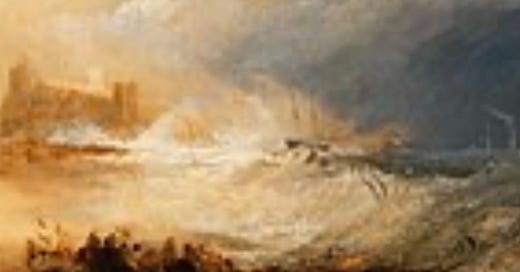SETTING THE STORY: Henry Derozio might be one of the most interesting historical figures you have never met. He was a real person, and the events I am describing are real. We might call today’s piece interpretive biography.
Let’s begin by referencing Lord Byron. George Gordon, Lord Byron, was a poet, and he was part of the Romantic movement in Europe. I first encountered Lord Byron through his poem “Don Juan,” when I was in high school. Spending time with Lord Byron in the library was preferable to eating lunch in the school cafeteria.
Across the world from Lotd Byron, a teenage boy living in India during the 1820s was reading Byron and the Romantic poets. His name was Henry Derozio. His reading of Byron exemplified the way words had begun to travel rapidly around the globe.
Henry’s family background, Portuguese, Indian, and British, represented the confluence of cultures that had come together in India. Henry did not fit neatly into the existing racial categories, but he considered himself passionately Indian to the core.
Henry was an outstanding student, and he became a professor at the new Hindu College when he was seventeen. He was the same age as most of his students.
I first came across Henry Derozio because I was a history nerd, and I was interested in the Bengal Renaissance. He was mentioned everywhere, as the professor who inspired a generation of great thinkers and shaped the history of Bengal. I initially pictured him as a middle-aged man, imparting his wisdom, not as a seventeen year old boy.
How did a boy his age get appointed to teach at a prestigious, brand-new British college in India? Henry came from a well-regarded family, but he didn’t have the kind of connections that might lead to this appointment. We might wonder if perhaps the college hired him because it could pay him less than a British teacher?
Henry’s students universally described his brilliance, and his ability to inspire. He encouraged his students to ask questions and think for themselves. He had something of the effect of Robin Williams’ character in “Dead Poets Society,” and he was speaking within a culture which practiced widow-burning and child marriage.
It sounds admirable when the history books describe Henry as a dedicated professor who inspired his students. What do we think happened in real life when an elite group of students went home and questioned their parents’ beliefs? Maybe refused to marry their designated child-bride, or spoke up against widow-burning? Parents were not happy.
Henry was not the only person questioning archaic beliefs, but other reformers had more social standing than he did. When parents approached the college with complaints, some of his fellow professors supported him, but none were willing to put their support on record. The most brilliant teacher of his generation, Henry was dismissed from his position the same month he turned twenty-two.
Henry Derozio was not only a gifted teacher, he was a poet. He published two volumes of poetry before he turned twenty. He wrote in the Romantic style of Byron, and he was the first Indian poet published in English. His long poem “The Fakeer of Jungheera” (two thousand lines) was his best known. We will never know what Henry might have written as a mature man, because he died of cholera at age twenty-two.
I find it easy to connect with Henry through his poems. I can imagine him writing them, as a teenage boy, two hundred years ago.
I will leave you with a few lines from one poem I like, “Love’s First Feelings.”
It is notable for taking the female perspective, as well as describing such a relatable experience, meeting someone at a party and wanting to see them again, wondering if you have lost the opportunity because you were too tongue-tied to speak.
“I looked around but he was gone/ And then I felt he was the one/ The only one who was to be/ The ruler of my destiny.” Henry Derozio, 1827
Until next time.




